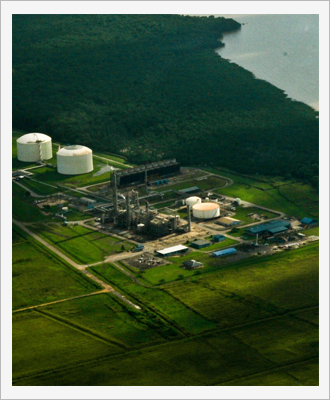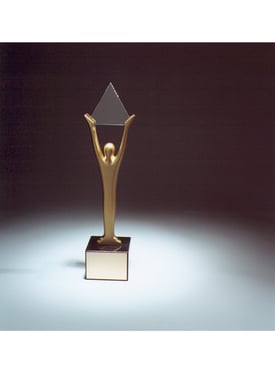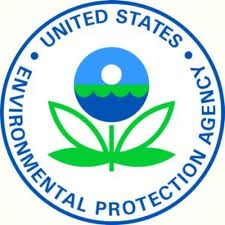ERA Environmental is rolling out an improvement to your EMS set up that improves the handling of xylene isomers (and other similar isomers) and some metal compounds in calculations for TRI threshold determinations and general TRI reporting.
These changes will ensure that your TRI report for the 2012 reporting period is accurate and in compliance with current federal regulations. No additional actions are required on the part of the user.
The following sections explain the logic behind the newest EMS updates:
Xylene Isomers and the de minimis Threshold
The toxic chemical list at 40 CFR Section 372.65 contains 4 xylene listings, each with their own CAS numbers:
- mixed isomers CAS: 1330-20-7
- o-xylene CAS: 95-47-6
- m-xylene CAS: 108-38-3
- p-xylene CAS: 106-42-3
According to SARA313 regulations, all mixed xylene isomers must be aggregated when determining if the isomers’ percent weight is eligible for the de minimis exemption. For xylene, a percent weight of less than 1% in a particular product allows a facility to not report the xylene from that product.
For example:
A facility uses or manufactures a product that contains 0.5% of o-xylene and contains 0.7% of m-xylene . Even though neither o-xylene nor m-xylene exceeds the 1% de minimis exemption reporting threshold, the product itself contains 1.2% mixed xylene isomers and must be reported using the specific SARA313 CAS number for mixed xylene isomers (1330-20-7)
When the threshold and de minimis concentration for each isomer in the mixture are exceeded independently, the facility may report under the individual isomer listings or under the mixed isomers listing. When the threshold and/or de minimis for each isomer in the mixture are not exceeded independently, but are exceeded collectively, the facility should report under the CAS number for xylene (mixed isomers). Therefore, if a covered facility otherwise uses a mixture containing 8,000 pounds of ortho-xylene, 4,000 pounds of meta-xylene, and 2,000 pounds of para-xylene, the facility would report as xylene (mixed isomers) because it exceeded the 10,000 pound otherwise use threshold for xylenes (mixed isomers).
To learn more about how the ERA-EMS uses and configures for the de minimis exemption read ERA-EMS Finishing Reports: Clarifying the De Minimis Option.
Other Isomers
The ERA-EMS has also been updated to handle SARA313 regulations regarding other isomers that are handled in a similar manner to xylene isomers. Cresol isomers, dichlorobenzene isomers, dinitroluene, and toluene diisocyanate isomers all must be treated in the same manner as xylene isomers for TRI reporting.
For each of these substances, the different isomers must be aggregated when determining if the de minimis exemption applies. If the aggregate exceeds the de minimis threshold, they should be reported collectively under the CAS associated with the appropriate mixed isomers in your report. The ERA-EMS handles this automatically.
The following isomers are affected by this update:
|
CAS
|
Name
|
de minimis wt%
|
|
108-39-4
|
m-Cresol
|
1
|
|
95-48-7
|
o-Cresol
|
1
|
|
106-44-5
|
p-Cresol
|
1
|
|
1319-77-3
|
Cresol (mixed isomers)
|
1
|
| |
|
|
|
95-50-1
|
1,2-Dichlorobenzene
|
1
|
|
541-73-1
|
1,3-Dichlorobenzene
|
1
|
|
106-46-7
|
1,4-Dichlorobenzene
|
0.1
|
|
25321-22-6
|
Dichlorobenzene (mixed isomers)
|
0.1
|
| |
|
|
|
121-14-2
|
2,4-Dinitrotoluene
|
0.1
|
|
606-20-2
|
2,6-Dinitrotoluene
|
0.1
|
|
25321-14-6
|
Dinitrotoluene (mixed isomers)
|
1
|
| |
|
|
|
584-84-9
|
Toluene-2,4-diisocyanate
|
0.1
|
|
91-08-7
|
Toluene-2,6-diisocyanate
|
0.1
|
|
26471-62-5
|
Toluene diisocyanate (mixed isomers)
|
0.1
|
|
|
|
|
Modified Handling of Certain Metal Compounds
The EPA has mandated that certain metal compounds should be reported separately from their general TRI toxic category:
- C.I. Direct Brown 95 (N100 Copper compound) CAS: 16071-86-6
- Maneb (N450 Manganese compound) CAS: 12427-38-2
- Zineb (N982 Zinc compound) CAS: 12122-67-7
- Hydrogen cyanide (N106 Cyanide compounds) CAS: 74-90-8
Accordingly, the EMS will no longer include your annual usage amounts for these four particular metal compounds against the corresponding category reporting thresholds.
Instead, the EMS will apply the following EPA-mandated thresholds to the compounds:
- Manufactured reporting threshold: 25,000 lbs.
- Processed reporting threshold: 25,000 lbs.
- Otherwise Used reporting threshold: 10,000 lbs.
 ERA Environmental Management Solutions has unveiled the newest addition to its comprehensive Environmental Management platform: Tank Emissions Software designed for the oil & gas industry and other chemical manufacturers.
ERA Environmental Management Solutions has unveiled the newest addition to its comprehensive Environmental Management platform: Tank Emissions Software designed for the oil & gas industry and other chemical manufacturers.
 ERA Environmental Management Solutions has taken the next step in environmental software leadership and migrated its award-winning Environmental Management Software (EMS) software onto the Cloud.
ERA Environmental Management Solutions has taken the next step in environmental software leadership and migrated its award-winning Environmental Management Software (EMS) software onto the Cloud. ERA Environmental Management Solutions is proud to announce that Sarah Sajedi, CEO and Director Research and development, has been awarded the Silver Stevie Award for the Woman of the Year in Technology Leadership.
ERA Environmental Management Solutions is proud to announce that Sarah Sajedi, CEO and Director Research and development, has been awarded the Silver Stevie Award for the Woman of the Year in Technology Leadership.
 ERA Environmental Management Solutions will be in attendance at the Texas Commission on Environmental Quality (TCEQ)'s upcoming Advanced Air Permitting Seminar & Oil and Gas Facilities Workshop, running from September 25th through 26th.
ERA Environmental Management Solutions will be in attendance at the Texas Commission on Environmental Quality (TCEQ)'s upcoming Advanced Air Permitting Seminar & Oil and Gas Facilities Workshop, running from September 25th through 26th.
 On August 2, the U.S. EPA announced that it has finalized changes to the New Source Performance Standards (NSPS) for VOCs regarding storage tanks used for oil, natural gas, gas production, transmission, and crude oil.
On August 2, the U.S. EPA announced that it has finalized changes to the New Source Performance Standards (NSPS) for VOCs regarding storage tanks used for oil, natural gas, gas production, transmission, and crude oil.